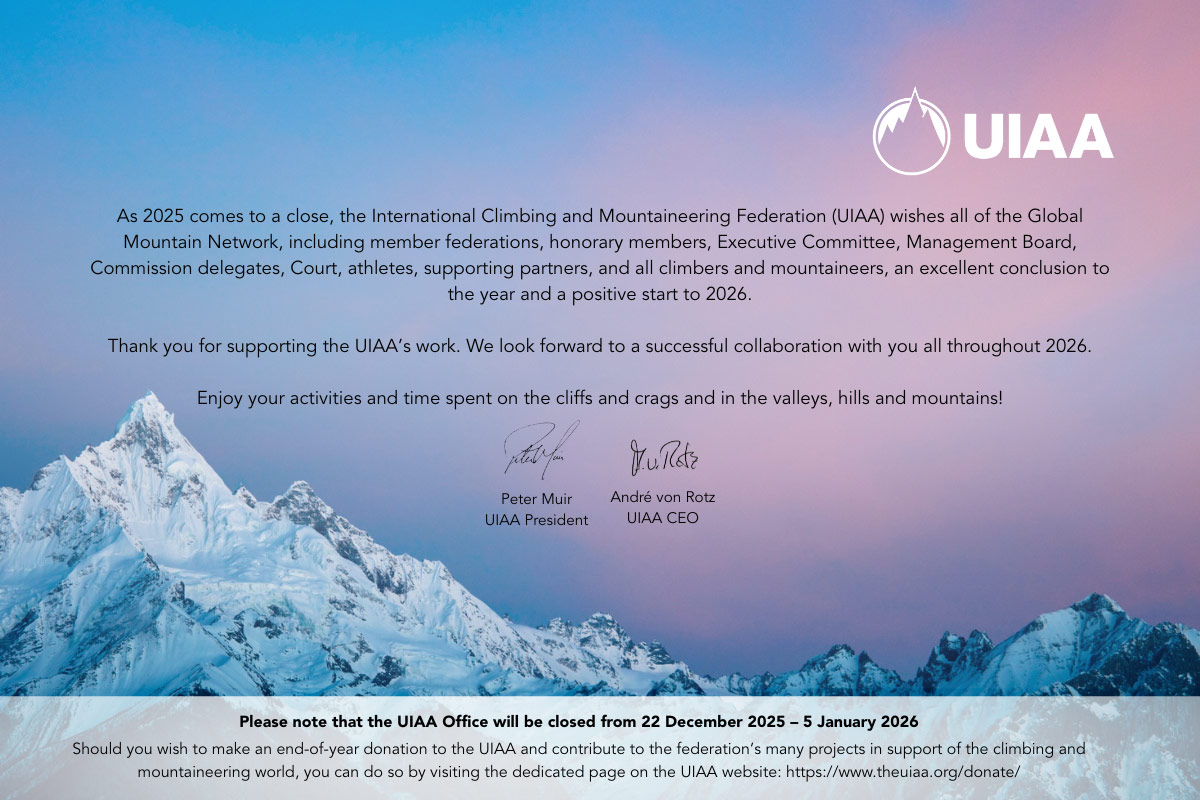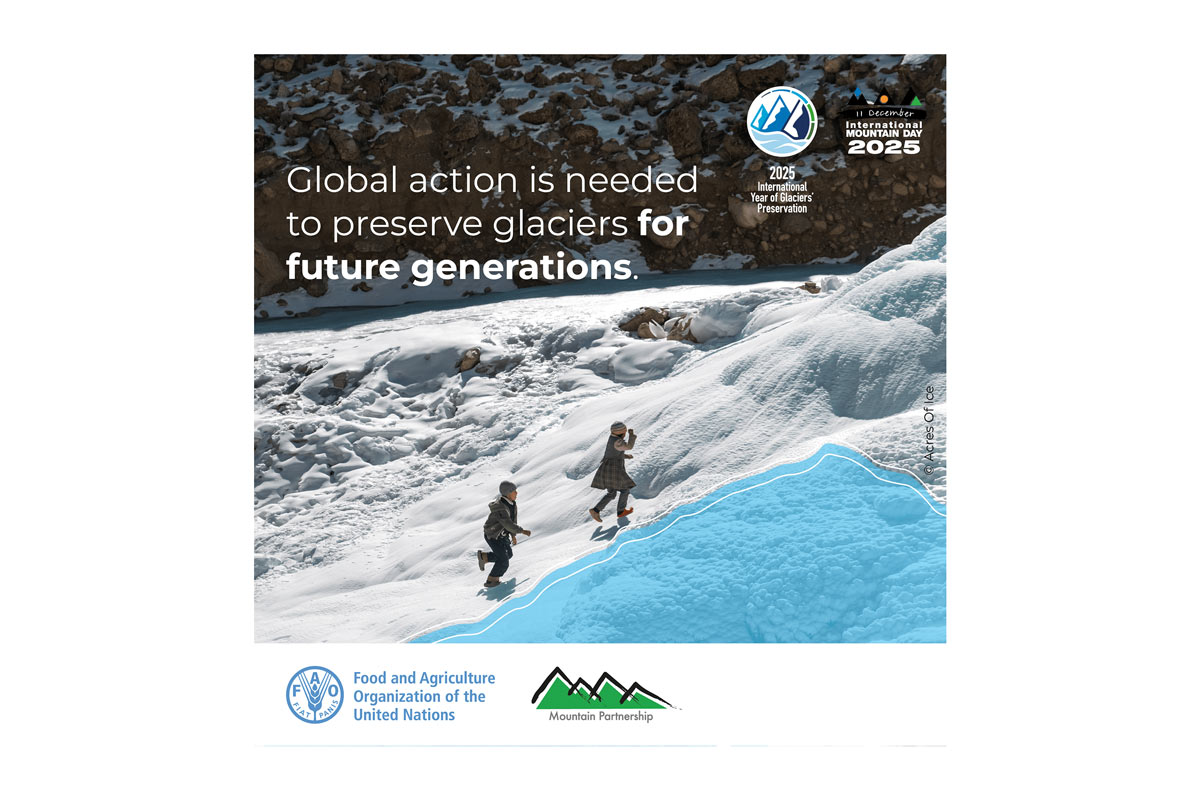On 9 May 1869, German and Austrian mountaineers founded the Deutscher Alpenverein (DAV) – German Alpine Association in English – as a “bourgeois mountaineering association”. Over subsequent 150 years, the DAV, a founder member of the UIAA, has grown to become ‘the world’s largest national mountaineering association, the nature conservation association with the largest number of members, as well as one of the largest sports associations in Germany’. Today, it unites around 1.3 million members in over 350 independent associations, the so-called sections.
Through the DAV hikers, tourers, climbers, nature conservationists, hut owners, family groups, ski mountaineers, expedition participants, mountain bikers and culture lovers find like-minded people. They all share a common passion: love of the mountains and movement in the unique natural environment of the mountains, which must be preserved for future generations. The main pillar of the DAV is voluntary work: more than 26,700 volunteers spend around 1.8 million hours a year on the committees and sections of the association, which is run on a voluntary basis. In addition to its ideological and political independence, the DAV is competent in all areas of mountaineering.

Copyright: Archiv DAV
Celebrations for the DAV’s 150th anniversary have been impressive and focused on all aspects of the association’s heritage and scope of interests. The festivities commenced following its annual press conference on 11 January. At the same time its film project “BERGE150” premiered in Munich, before touring the rest of Germany. The film brings a selection of the best mountain movies from 100 years of film history back to the big screen and shows skiing, climbing, mountaineering and great expeditions to the highest mountains in the world – then and now.
On its birthday weekend in May, the DAV celebrated with a number of events. There was a further press conference, which explored a number of topics, including a historical overview of the association, as well as looking at its role as a socio-political actor and the rise and continued development of Alpinism as a sport.
The DAV also organised a series of lectures, together with the Bavarian Academy of Sciences. Over six evenings between May and July, high-calibre speakers gave talks on the Alps and mountain passion in a sociological, ecological and economic context. The events took place on Prater Island, Munich and in the Bavarian Academy of Sciences. Throughout the events, journalists from the Bavarian Broadcasting Corporation and the Süddeutsche Zeitung, among others, lead the way. Further details about the lectures and discussions can be retrieved online.
On 11 May, the DAV‘s exhibition “Die Berge und Wir” (“The mountains and Us“) opened. The exhibition takes a look back over the past 150 years, depicts life back then and what struggles the early mountaineers had. The love people have for the mountains remains, only the meaning of the mountains for the people has ultimately changed. The exhibition “The Mountains and Us” and the book of the same name outlines both continuity and changes – and make it clear how the DAV changed with them. This was followed by a grand family day on the Praterinsel (location of the DAV’s alpine museum) when the exhibition opened to the general public.

Copyright: Henning Schacht
Another event to mark the actual week of the DAV’s 150th birthday, saw a hiking tour organised with the German Head of State, Frank-Walter Steinmeier at Spitzingsee in the Bavarian Alps. The Head of State and various members of the DAV along with leading athletes, volunteers, DAV President Josef Klenner (longstanding member of the UIAA Management Committee) and the Bavarian Minister of Agriculture, hiked to Schönfeldhütte. In numerous discussions, Steinmeier learnt about many aspects and activities of the DAV, and among other things, about the importance of nature and conservation.
And the celebrations are far from over yet. Further celebrations will be held during the DAV’s Annual General Meeting, which is also the general meeting of its anniversary, at the end of October. The meeting will this year be held in Munich, as the DAV was founded there in 1869. There will be a special celebration on 25 October with a gala evening held in the beergarten Löwenbräukeller.
The anniversary has resonated with the public and media across Germany, with coverage featuring in a range of media outlets including print media, radio and podcasts. One of its biggest media events is a close co-operation with the Süddeutsche Zeitung, a major Munich-based newspaper, which has a significant readership across Germany and Austria, but also reaches beyond the borders of both of these countries. They will publish a supplement in their newspaper in certain regions in southern Germany on 27 September.

Copyright: DAV-Sektion Bayerland (Archiv Dr. Walter Welsch, München)
The DAV has also produced a fantastic website page (in German) to mark its 150 years.
2019: DAV’s Core Activities

Copyright: Alpines Museum DAV
Leisure Mountain Sports
The core activity of the DAV is traditionally the leisure-oriented mountain sport, in its origins mountaineering and hiking. Members, young or old, beginner or expert, woman or man, can all choose from a fascinating spectrum of more than 165,000 activities. The spectrum ranges from simple hikes to climbing tours, from ski weekends to alpine tours, from mountain biking to via ferrata. In addition, there are more than 5,000 urban sports facilities, which, together with the more than 200 climbing facilities operated by the DAV, round off the wide range of activities on offer in the sections. The varied mountaineering programme is designed and supported by around 20,000 licensed DAV tour and course guides for all forms of mountaineering throughout Germany. Families, children, young people, the elderly and people with and without disabilities, all generations are motivated to exercise in the community through appropriate activities. Thus the DAV unites all those interested in mountaineering as well as the alpine landscape and culture and in this way assumes an important cross-sectional and bridging function in society.
Safety and Training
Safety in mountaineering and alpine training are of central importance. Whether hiking, sport climbing, mountaineering, rafting or mountaineering – mountain experiences not only offer fun and community experiences, but also demand the relevant skills and knowledge. To make mountaineering even safer, the DAV offers beginners and professionals well-founded alpine training and further education. The aim is to promote the conscientious handling of risks in nature and self-responsible mountaineering.

Copyright: Archiv DAV
Nature and Environment
The DAV acts as an “advocate” for the protection and sustainable development of the Alps and low mountain ranges. As unique habitats with their special biological diversity and rich cultural heritage, they must be preserved in a special way. The declared aim is to bring mountain sports and nature conservation into harmony. This means that mountaineering should be carried out in a way that is compatible with nature, environmentally friendly and climate-friendly, and that the infrastructure required for mountaineering should be ecologically oriented. Since 2005, the DAV has been a nationally recognised nature conservation association and can comment on nature conservation procedures. Important concerns of the DAV’s nature conservation policy are, among other things, an ecological and environmentally friendly travel to the mountains, a nature-friendly spatial planning and the commitment against further ski resort development.
Huts and Paths

Copyright: DAV/Marco Kost
The network of over 320 publicly accessible huts with over 20,400 sleeping places, approx. 800,000 overnight stays/year and 30,000 kilometres of paths forms an indispensable infrastructure for mountaineering. Since its foundation, maintaining it has been one of the most important tasks of the DAV. The equipment and operation of the huts are based equally on mountaineering and ecological criteria. This means that the latest technologies, such as wastewater treatment technologies and regenerative energies, are used in high-alpine accommodation – even in extreme alpine locations. The voluntary maintenance and marking of existing paths and trails enables all mountaineers to enjoy low-risk nature experiences without placing unnecessary burdens on nature. A total of around 16 million euros are invested annually in the huts and paths.
Competitive Sport
As a professional association for mountaineering within the German Olympic Sports Federation, the DAV is responsible for sports climbing, ski mountaineering and competitive mountaineering (expeditions) in the field of competitive sports. At the national and international championships in ski mountaineering, endurance talents prove their skills. The DAV also focuses on promoting young talent in the expedition sector. Young, talented mountaineers can advance professionally in “expedition cadres”, each with a three-year duration. With the Olympic perspective of climbing in 2020 in Tokyo, sport climbing is taking on a new dimension. For many years now, the DAV has offered the best climbers the opportunity to compete at state and federal level as well as in international competitions.

The historical pictures of the DAV displayed elsewhere in this article demonstrate how the association was once open only to men, barriers which were part of a wider cultural issue impacting many alpine clubs and which have been broken over time.
Copyright: DAV/Silvan Metz
Science, Culture and History
From the very beginning, science and alpine research have been anchored in the statutory purpose of the DAV. The “Haus des Alpinismus” in Munich is a central forum which not only houses the Alpine Museum and the DAV Archive, but also the world’s largest specialist alpine library with more than 70,000 media. Together with well-founded event series, the museum programme and the regional cultural activities of the sections, the DAV offers a platform for mountain lovers of all kinds who want to find out and exchange information about Alpine history and its connection to social developments. In this way, the passion of individuals becomes the culture of many.
The UIAA looks forward to being part of the DAV’s celebrations at its annual General Meeting and congratulates the association on its momentous achievements and accomplishments over the past century and a half.
Further Reading
German Alpine Club website
German Alpine Club 150 years microsite
Main Photo:
Hike of the German Alpine Club. DAV President Josef Klenner together with the German Federal President Frank-Walter Steinmeier hike to the Schönfeldhütte, Spitzingsee, on the occasion of the 150th anniversary of the Deutscher Alpenberein. Copyright: DAV/Marco Kost
UIAA & DAV Articles



